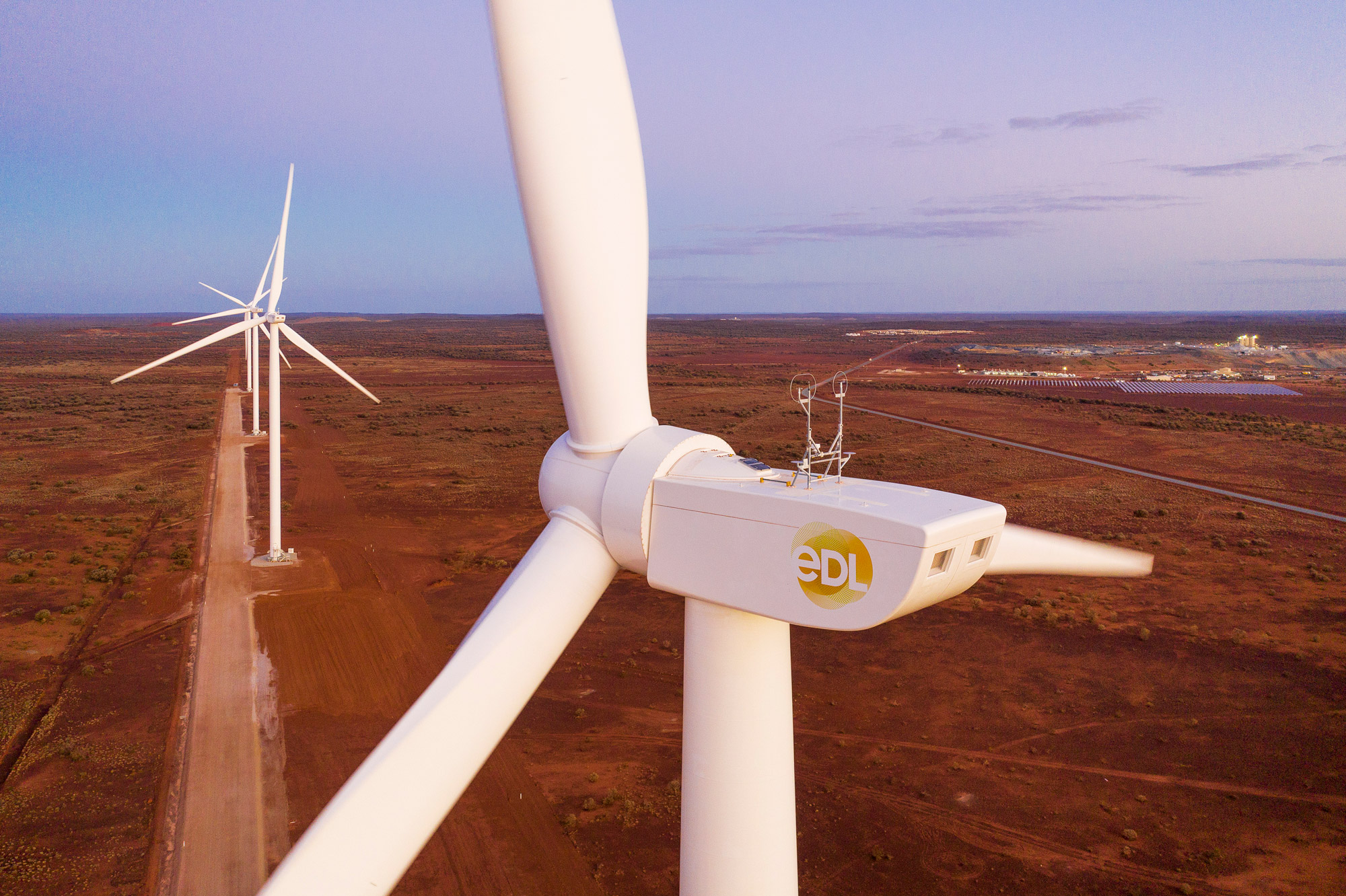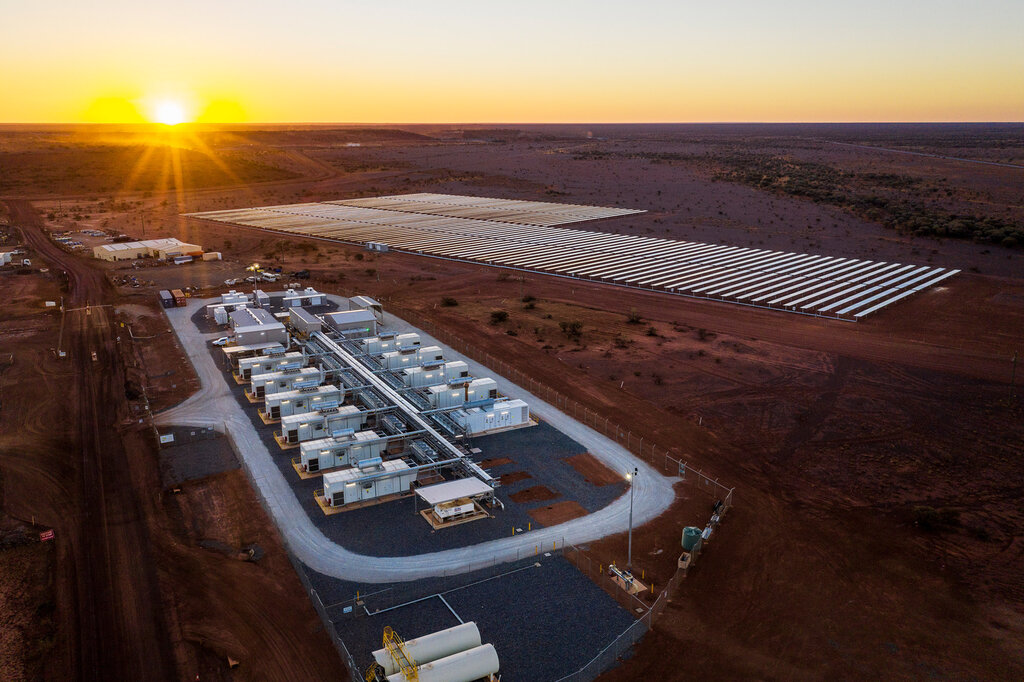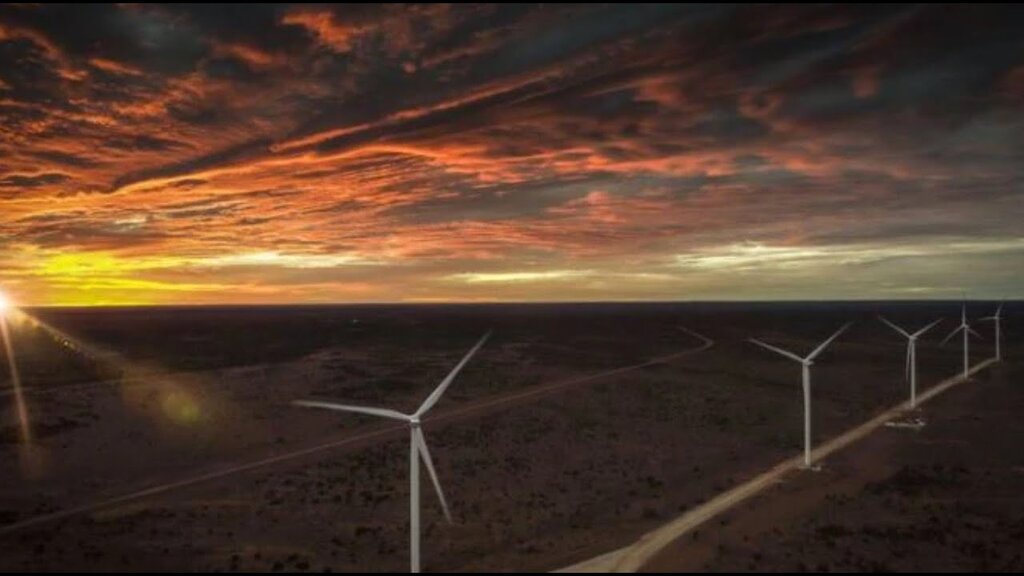Feature
Going off-grid: the state of on-site power at Australian mines
The Australian mining sector is reflecting an industry-wide trend towards more off-grid energy supply to power mining operations, including a growing share of renewables. Heidi Vella finds out what solutions miners are opting for and what benefits and challenges are involved.

EDL’s hybrid renewable microgrid at Agnew gold mine. Credit: EDL
In the rugged expanse of Australia's mining territories, operators are pivoting towards energy self-sufficiency. According to industry insiders, although on-site power solutions are nothing new, their adoption has gained considerable momentum in recent years, with companies such as Rio Tinto, BHP, Fortescue Metals and more going off-grid.
There are over 100 mines (out of a total of 350) in the country equipped with independent power supply, according to information collected by Global Data. This reflects a wider industry movement towards more energy self-sufficiency; of a sample of 3,000 mines globally collected by Global Data, just under half (1,250) are understood to be off-grid.
In Australia, this trend is partly due to necessity. In swathes of WA, the Northern Territory, inland of South Australia, the west of New South Wales and in parts of Queensland, as mine sites become ever more remote, there is very limited grid access, forcing miners to seek alternative arrangements. In addition, the demand for so-called ‘green minerals’ such as rare earths, lithium, cobalt and nickel has increased mining activity and expansions.
Another factor is the surging fossil fuel prices miners have been grappling with in recent years, since operators can displace some of this cost with on-site renewables. But lastly, and particularly for larger mines sites, a key driver is the growing pressure to reduce operational carbon emissions.
Many miners have their own commitments, but the Australian Government has also legislated greenhouse gas (GHG) reduction targets and implemented the National Greenhouse and Energy Reporting scheme. This is a national mandatory framework for reporting information about GHG emissions, energy production and energy consumption for registered corporations.
Embracing the energy mix
“The cheapest – and actually one of the few – ways a miner has to reduce a mining operation’s GHG emissions is to shift to renewable energy,” says Matt Duxbury, a senior commercial manager at Pacific Energy Corporation, an independent energy resources supplier that provides standalone power plants to the mining industry.
The company is currently working to bring energy infrastructure to AngloGold Ashanti Australia’s Tropicana gold mine in Kalgoorlie in Western Australia. Pacific Energy is adding 24MW (4 x6MW turbines) of wind power and 24MW of solar PV, plus battery storage, to an existing 27.5MW gas power station that was formerly diesel-fuelled. The project is due to be completed around July 2025 and will be operated and maintained by the energy company. The site features open pit and underground mining, as well as a processing plant.
In 2022, Rio Tinto unveiled plans to construct two 100MW solar power facilities and 200MWh of on-grid battery storage in the Pilbara by 2026. In November last year BHP switched on 38.1MWs of off-grid solar and 10.1MW battery energy storage system to help power its Nickel West Mt Keith and Leinster operations.
In 2022, Rio Tinto unveiled plans to construct two 100MW solar power facilities and 200MWh of on-grid battery storage in the Pilbara by 2026.
At GoldFields’Agnew gold mine in Western Australia, EDL Energy constructed what the company says is the largest hybrid renewable energy microgrid. The mine, which was previously grid connected, now has 46MW generating capacity from a combination of solar (4MW), five wind turbines (18MW total), battery storage (13MW) and a gas-fired power plant (21MW).
EDL says it will provide 55-60% of the mine’s power from renewable energy over the long term and has increased energy reliability and efficiency at the mine, as well as lowering operational costs and reducing the project’s carbon footprint.
“It has also provided flexibility, enabling a balanced mix of energy sources based on changing demands and availability,” says Geoff Hobley, general manager for remote energy at EDL. GoldFields also considers it an attraction for future skills recruitment.
EDL’s hybrid renewable microgrid supplies 55-60% of power at Gold Fields’ Agnew gold mine in Western Australia. Credit: Australian Renewable Energy Agency.
These renewables-heavy projects are more the exception than the norm so far, but that is changing. The transition towards renewables started around five years ago, according to Duxbury. Since then, almost every project Pacific Energy has completed has featured solar PV.
Traditionally, miners used heavy fuel such as diesel and coal – an economic solution if already on-site – but then started incorporating gas and liquefied natural gas (LNG), which is about 30% less carbon intensive. This was enabled by the introduction of gas pipelines and gas engines, with LNG proving popular because it can be transported in containers, an ‘absolute boon’ for cost, according to Duxbury.
As the cost of renewable energy, most notably solar power, has fallen, the technology has become a more viable option for miners – especially in Australia, where the vast landscape and hot climate are ideal for large solar farms.
Technical challenges for on-site power
Although decentralised on-site power is technically well established, moving to renewables and hybrid systems adds complexities and can be capital intensive. This makes it difficult for miners outside of the major companies, such as Rio Tinto and BHP, to establish their own power system network without the support of external expertise – especially since maintaining continuous energy supply 24/7 is critical for operations.
To ensure security of supply, most mines will have a conventional diesel or gas station for dispatchable power, in addition to renewables, says Duxbury.
“When doing this the [fossil fuel] plant is not operational as much, creating a fuel saving, and if the renewable element comes in at less than the cost of the fuel, you end up with cheaper power and less carbon,” he explains.
To ensure security of supply, most mines will have a conventional diesel or gas station for dispatchable power, in addition to renewables.
The lifespan of hybrid projects can be over 20 years, allowing a long period over which to amortise the upfront capital costs. Solar power is the most popular type of renewable energy currently deployed at mine sites, although location, space and resource availability, and environmental impact will determine cost-effectiveness and the energy mix miners ultimately opt for.

Aerial view of the solar farm and battery units which form part of the Agnew onsite power plant. Credit: EDL
Going fully electric
Experts say it’s possible to achieve 70 -90% of energy supplied from renewables with a combination of wind and solar, but beyond this there are constraints. These include access to land – large solar and wind farms need a lot of space – environmental impact, initial costs, energy density and efficient and good-value storage to manage intermittency.
At present, Duxbury says the cost of battery technology is still prohibitive, and around 16% of energy is lost transporting energy and in out.
“With a cost-effective energy shifting battery that works, we could get to 70 or 80% with PV and battery alone,” he says. “But that last bit is hugely problematical because PV production is low in winter and high in summer, meaning you're forced to shift summer PV energy to winter via storage that is only being used once a year.”
Duxbury adds that in the future a flow battery, a rechargeable fuel cell that uses electrolytes, could be a solution, as well as possibly commercial scale hydrogen. Both could support the use of renewable energy for 24/7 operations.
It’s also worth considering the impact of increasing electrification of machinery such as excavations and dump trucks – a shift vital to meeting emissions targets – and the significant demand for power this will create in the coming decade.
It’s also worth considering the impact of increasing electrification of machinery such as excavations and dump trucks – a shift vital to meeting emissions targets – and the significant demand for power this will create in the coming decade.
While there are no limitations on standalone power plant size in theory – Duxbury points out Pacific Energy recently built 175MW gas torque power station for Fortescue Metals – there will be space and cost limitations.
But for now, experts agree there is no turning back the current shift towards more off-grid solutions, including renewables – a move that will benefit the wider energy transition.
